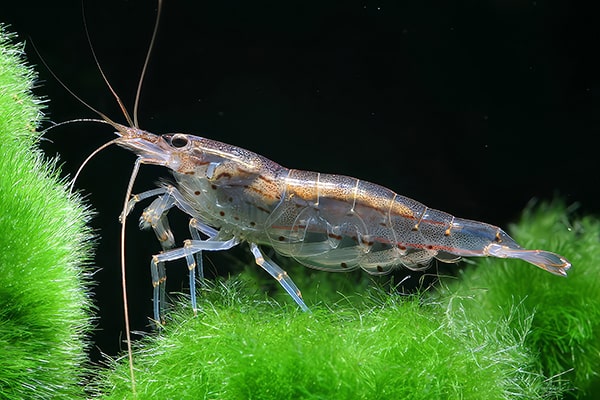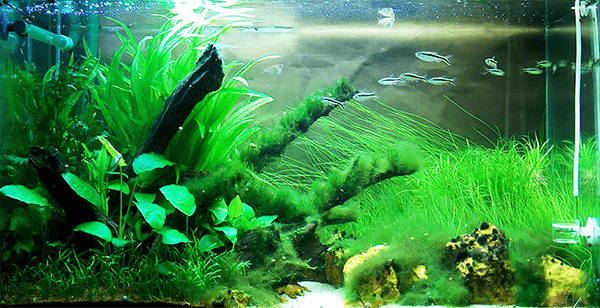Algae removal is one of the most important skills every aquarium hobbyist needs to master. Especially when dealing with the dreaded Cladophora algae, the usual cleaning routines just won’t cut it. Whether you’re battling stubborn green fuzz on your decorations or trying to prevent an outbreak in your 3D-printed caves, this guide is your all-in-one solution to take back control of your aquatic paradise.
Over the years, many aquarists have fought losing battles with fish tank algae. But you don’t have to be one of them. By using smart, proactive strategies and safe, proven methods, you can stop algae from overtaking your tank and reclaim your beautiful underwater world. Here’s everything you need to know about algae prevention, treatment and deep cleaning methods that work.
🌿 Understanding Fish Tank Algae: The Basics
Fish tank algae thrive when three things align: excess light, nutrient build-up and tank imbalance. While some algae types can be harmless or even beneficial, others, like Cladophora, can destroy the beauty of your tank and wreak havoc on your ecosystem.
Main Causes of Algae in Aquariums:
- Overexposure to light (too strong or left on too long)
- High levels of nitrates and phosphates from overfeeding
- Poor or excessive water flow
- Irregular water changes
- CO₂ instability in planted tanks
- Contamination from plants, fish or equipment from other infested tanks
Algae prevention starts by managing these root causes. The good news? Once you understand these basics, you’re halfway to a cleaner, healthier tank.

Also, beware of false solutions — many aquarium myths suggest ineffective fixes. For instance, amano shrimp are often cited as a remedy for cladophora algae, but they won’t touch it unless it’s already soft or dying. Likewise, popular moss balls (marimo) are often infected with cladophora and should be avoided altogether.
🚫 Algae Prevention Techniques That Actually Work
Whether you’re new to the hobby or a seasoned aquascaper, these algae prevention tips can save your tank from disaster:
1. Optimize Lighting
- Limit light to 6–8 hours daily with a timer;
- Avoid placing the tank near windows or direct sunlight;
- Dim or raise LED lights to reduce intensity.
2. Maintain Water Quality
- Perform 20 – 30% water changes weekly;
- Avoid overfeeding your fish — leftover food becomes nutrient soup for algae;
- Test water weekly for nitrates and phosphates.
3. Use Fast-Growing Plants
- Add hornwort, duckweed, water sprite;
- Get creative: try growing herbs, bonsai or vegetables like potatoes or garlic, placing the roots in the fish tank water! They will absorb extra nutrients;
- Emersed plants (growing above water) are highly effective at nutrient export.
4. Improve Flow and Filtration
- Use filters and flow outlets to eliminate dead spots;
- Ensure proper circulation around 3D printed decorations;
- Keep mechanical and biological filters clean to maintain flow efficiency.
5. Stock a Clean-Up Crew
- Nerite snails, otocinclus catfish, and bristlenose plecos are champions at fish tank cleaning. This is a superior solution also for keeping your 3D printed tank decor clean, as removing a 3D printed cave and cleaning it manually isn’t fun — I’ve done it many times;
- Avoid relying on amano shrimp for cladophora — it’s a common myth. They won’t eat it;
- Clean-up crews help maintain balance but aren’t miracle workers—still monitor nutrients.
🧼 How to Remove Algae from 3D Printed Caves and Decorations
Fish tank algae snatches to textured caves, porous rocks and 3D printed decorations more stubbornly than smooth glass. Here’s how to safely clean your 3D printed aquarium accessories:

Hydrogen Peroxide Dip (For Out-of-Tank Items)
- Remove item and rinse off debris;
- Soak it in a solution of 1 part hydrogen peroxide to 10 parts water for 30–60 minutes, preferably in a dark area with no light;
- Before rinsing, you can use a brush to clean off any leftover algae;
- Rinse thoroughly before returning the item to the aquarium.
In-Tank Hydrogen Peroxide Treatment (Safe for Shrimp & Snails)
This method is even safe for shrimp and snails when dosed correctly. Do not use larger doses than listed here and make sure you learn how to properly mix and apply hydrogen peroxide before using it in your tank.
- Turn off your lights and filters. This is important because hydrogen peroxide may kill beneficial bacteria living in your filter and light can reduce its effectiveness — peroxide works more efficiently in the dark;
- Mix 1.5ml of 3% hydrogen peroxide per 4.5 liters of aquarium water in a separate container. For example, in a 100 liter aquarium, you would mix approximately 33ml of hydrogen peroxide into the tank water;
- Mix the solution in a cup with your aquarium water;
- Slowly pour into tank, leave lights off for 1 hour;
- Do a 30–50% water change after one hour, then turn the lights and filter back on;
- Repeat weekly, if needed.
This method not only aids in algae removal, but also boosts shrimp activity and reduces bacterial load. Monitor your tank after treatment and ensure oxygen levels stay stable.
⚠️ Cladophora Algae: How to Win the Toughest Battle in Aquatics
If you ever see tough, stringy green algae that sticks to everything and doesn’t respond to normal cleaning, it might be cladophora. Cladophora algae is the nightmare no aquarist wants. It’s tough, invasive and nearly impossible to kill without drastic action.

This isn’t your average green fuzz. Cladophora survives inside substrate, filters and even plant roots. Here’s a story: I personally battled this algae many times. I read dozens of forums, scientific research articles, watched YouTube tutorials and tested every method — until I finally found what worked.
Steps to Eliminate Cladophora:
- Mechanical Removal: in every case, start by removing as much algae as you can mechanically — this is always the first step;
- Remove all Items: take out gravel, decorations and plants;
- Boil the Gravel. If you are using aquarium soil, in most cases, the best option is to replace it entirely;
- Deep Clean Tank: clean the aquarium with a solution of 100ml hydrogen peroxide per 1 liter of water;
- Spray Every Surface: let it sit for 20 minutes, rinse and repeat;
- Soak Plants for 20 minutes in same solution — do not exceed this, or you’ll kill the plants;
- Discard of Moss: cladophora attaches tightly — moss cannot be saved. Hydrogen peroxide will kill moss as well, so there is no way to save it.
Remember: soaking filter sponges in peroxide will kill beneficial bacteria. Replace or reseed them after cleaning using bottled bacteria or healthy media from a clean tank.
After restarting, test nitrate levels, skip feeding for 1–2 days and monitor for regrowth. Don’t reintroduce contaminated plants or moss and avoid buying livestock from algae-affected tanks.
✅ Final Thoughts: Clean Tank, Happy Fish
Dealing with fish tank algae doesn’t have to be a chore. Keep your lighting in check, don’t overfeed your fish, grow fast plants (even outside the tank) and clean smartly. With the right approach, even the most persistent algae — yes, even cladophora algae — can be defeated.
🔍 Want More Cleaning Tips?
If you’re dealing with more than just algae — think stubborn calcium buildup or nasty invaders like camallanus worms — check my post: “3 Aquarium Cleaning Methods That Won’t Ruin Your Tank or 3D Printed Decorations.” It’s packed with safe, effective solutions to keep your tank pristine without damaging your setup.
Make it a habit to observe your tank daily. Look for signs of imbalance before algae becomes a problem. And above all, don’t give up if you’re battling cladophora. Use the tips here and you’ll win the fight. Start taking control today. Your fish (and your future self) will thank you.
💬 Share Your Algae War Stories!
Have you battled cladophora or uncovered a genius algae hack? Drop a comment below and share your experience! Your insights could save another hobbyist’s tank — and we love learning from our fellow aquarists.
- Why Aquarium Plant Holders Are Changing the Game for Tree Lovers
- Stunning New Aquarium and Terrarium 3D Print Designs: Your Gateway to Profit and Creativity
- Why Matte PETG Is a Game-Changer for 3D Print Fish Tank Decor
- Why I’m Launching Commercial Subscriptions — A Way for You to Make Money Online
- Say Goodbye to Fish Tank Algae: The Ultimate Guide to Cladophora and other Algae Removal
